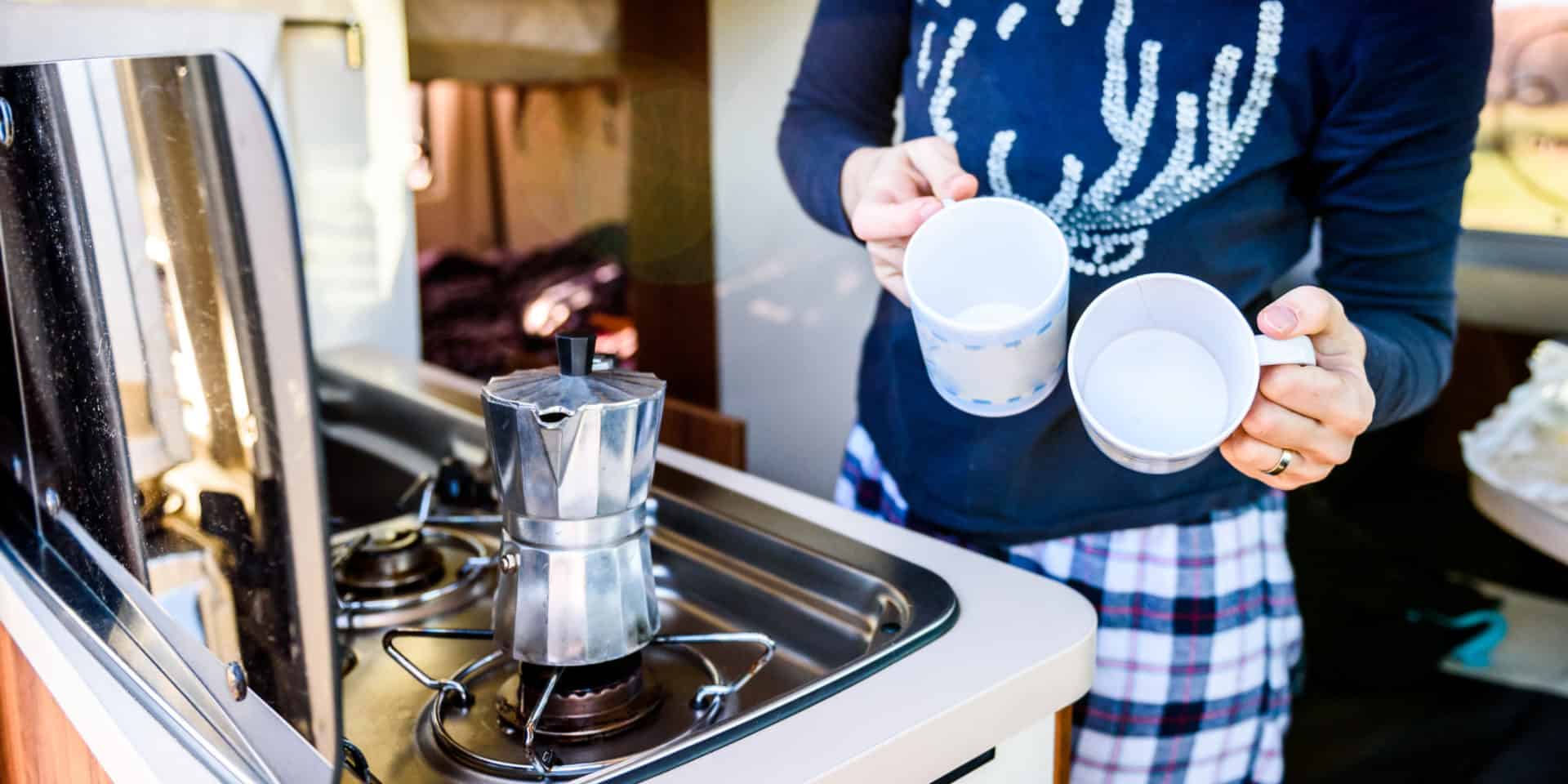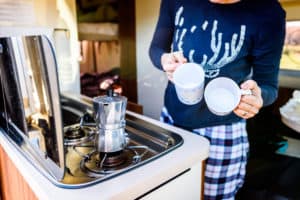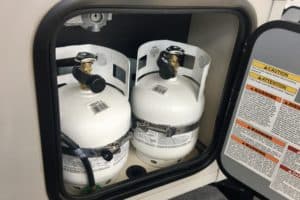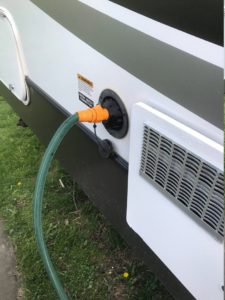RV Appliances: How Do They Work?
A common, completely valid, question that comes up when thinking about RVs and seeing them as “homes on wheels” is how does everything actually work? More specifically, how do all the usual household luxuries like the shower, toilet, A/C + heating, the stove top, fridge, or lights work? Fear not, as we have all the answers around functionality of RV appliances!
Source(s) of Power
Water: How Do We Get It?
Now we can get into the appliances themselves. Starting with water. We have so many uses for this necessity and it can be difficult, at first, to wrap our minds around where we actually get it from while on the road.
Much like our two sources of power, we also have two ways to get or hold water in our RV. The first, is a water tank. This tank sits underneath your RV typically in the middle or towards the back where you plug in at. As RVs vary in size, so does the capacity of water your tank can hold (averages between 25-75+ gallons). You can fill this tank with water by hooking up one end of a hose to the drain outlet of the tank, and the other end to a water spigot. You will know when it is full because you can usually see the water line while looking at the tank itself. Or, there are automatic valves that will leak or release water when it is too full.
The water tank route is good for boondocking trips, or to cover your water source in between stops. Going this route also requires a higher consciousness of how much water you use. In other words, be conservative. This is where all the warnings of “you can only do 3-minute military showers!” or “use paper plates, because you can’t do dishes!” in an RV come from. Which, allow us to clear this up, is not totally true!
Not totally true, because there is another way to have an ongoing source of water. Just like your sticks and bricks house pulls water from the city into your plumbing in out your sink or shower, your RV can also do that with hook-ups at an RV resort. This works the same way that your shore plug works. Connected to the same electrical box, there is a water spigot for you to hook your water hose up to and hook the other end of the hose into your water tank. You’ll turn the spigot wheel to the left, and the water will flow in the same exact way it does in your home!
Kitchen Appliances:
No one wants to go hangry. Mama’s gotta eat. Kiddos gotta eat. Dad’s gotta eat. Just because we’re glamping, doesn’t mean we have to resort to sandwiches and chips. We can have a full blown family dinner in the RV too! Here’s how:
Remember, when you are connect to shore power, you are using your 120-Volts to power things like your fridge/freezer and microwave. This means you can store your perishables, just like at home, and you can heat up anything you need in the microwave. Your fridge will work off propane, as well, so either way, you have access to cold food and drinks.
And, as mentioned earlier, your propane tank powers your stove and oven. You can boil those noodles and cook the sauce, meat or veggies on the stove, bake the garlic bread in the oven, and pull some fresh veggies from the fridge to make a salad. This applies to whatever recipe you’re feeling.
Think of it this way: anything is possible, you just have to cook it in smaller dishes.
Finishing Thought:
We hope the breakdown of RV appliances and powering them helped ease your mind a bit.
The best way to think about all of this too, is to picture your RV like your home. Your home has all this wiring and plumbing that goes unseen. Your RV is a raised, above ground home, right? So all the same wiring and plumbing exists, it’s just visible! Yes, it can require a little more “manual labor” to get it all hooked up and functional, but once you go through all the motions of doing so it’ll all come naturally the second time, third time, etc.
Our team at Tumbleweed Travel Co. is here to provide you with all the material and tools you need to feel confident and eager to hit the road. RV trips can seem daunting, but they shouldn’t be! Reminding you that you can take that road trip and have all the comforts of home.
We are so excited to see where the road takes you, and happy to help get you there.





